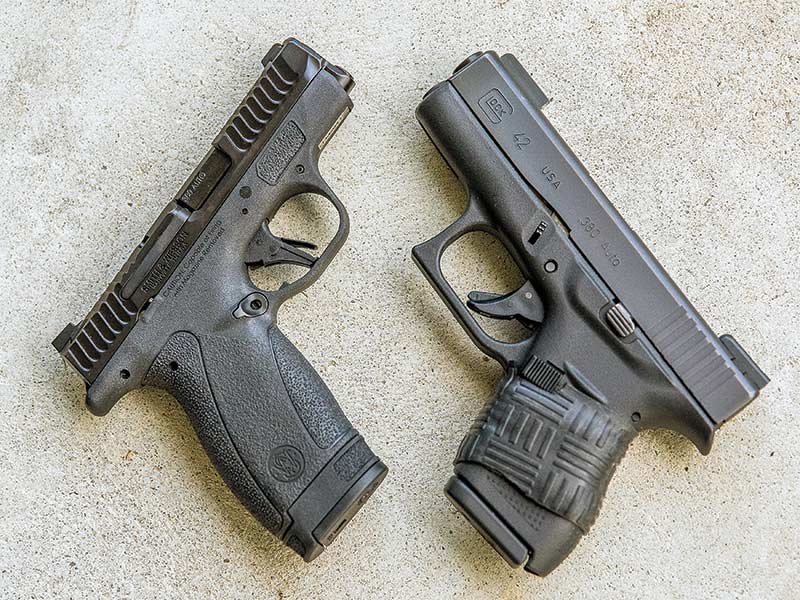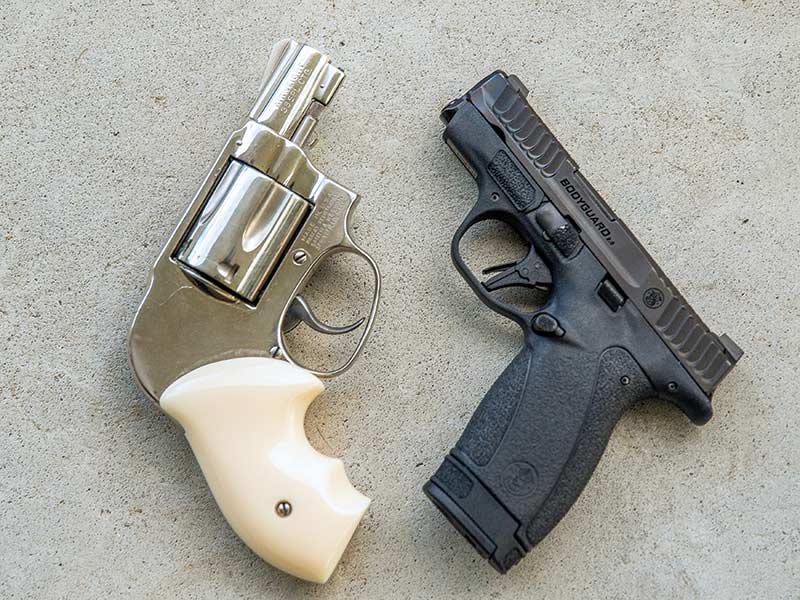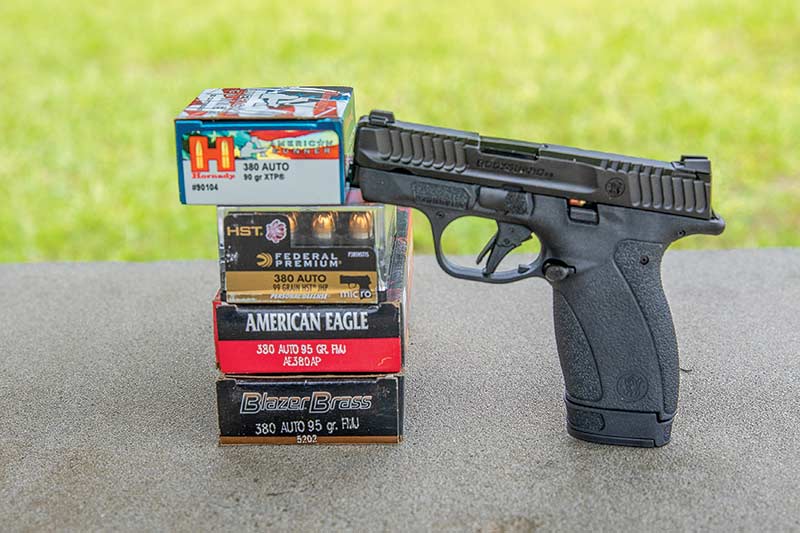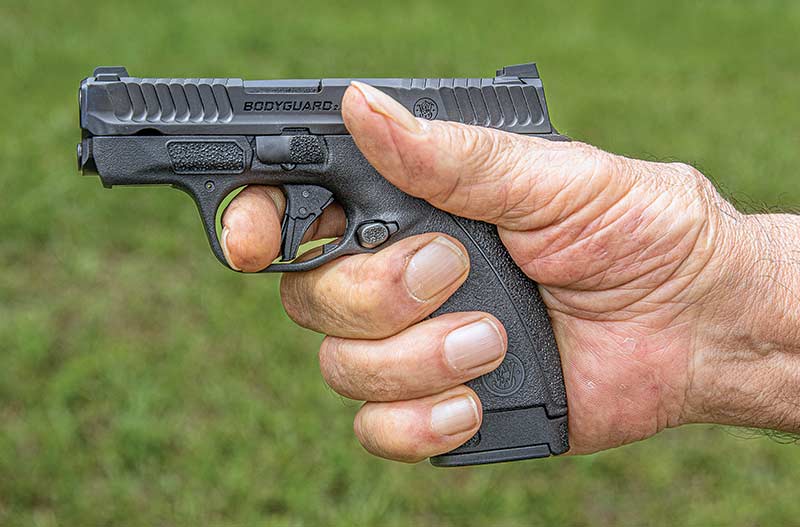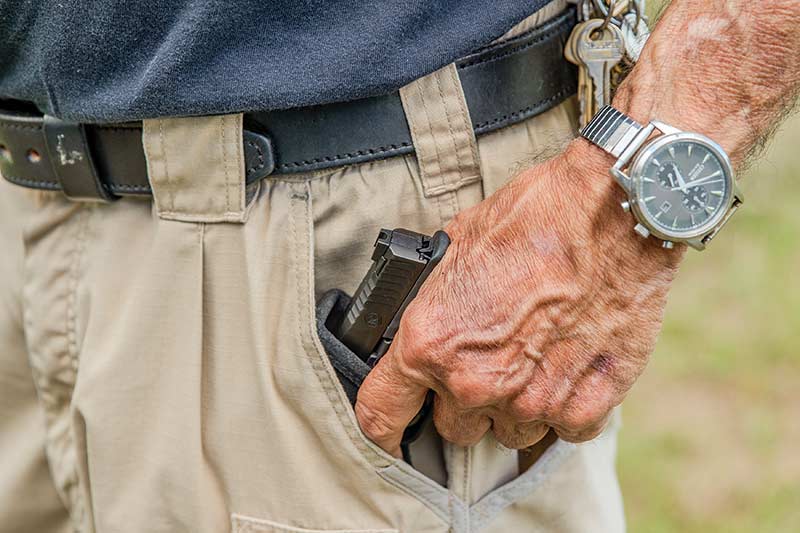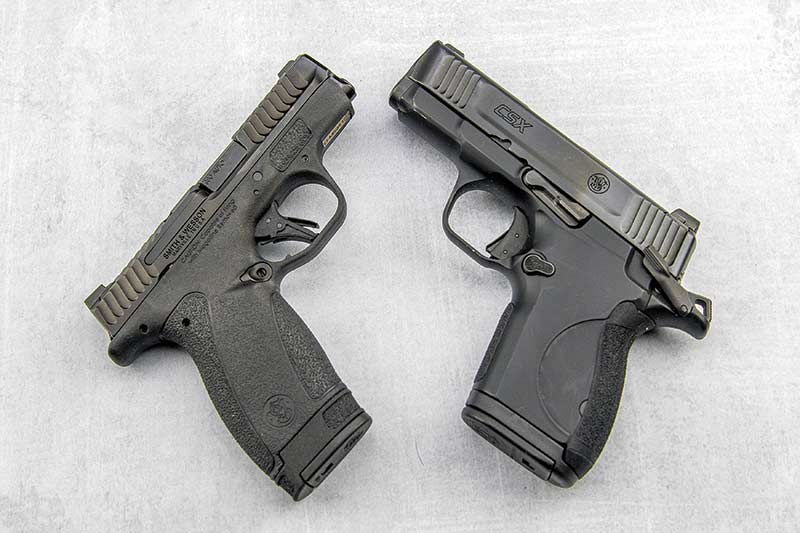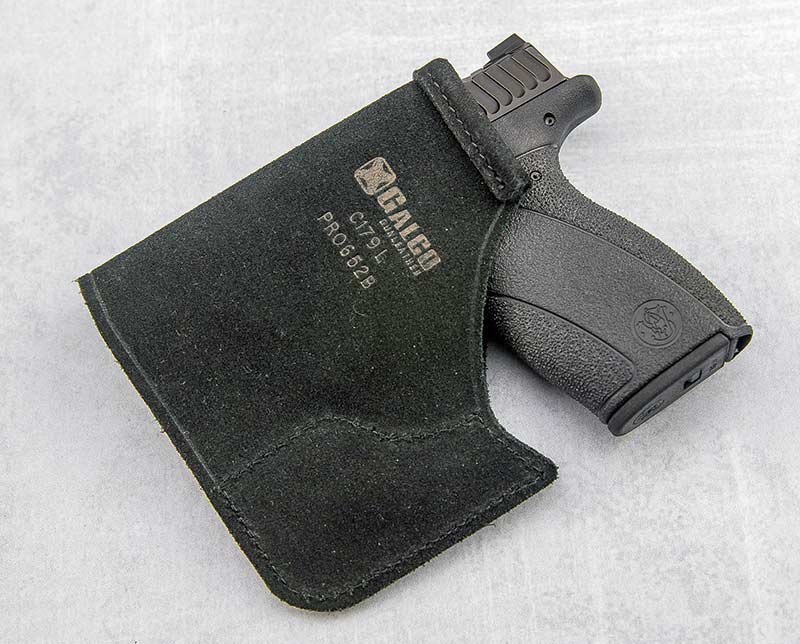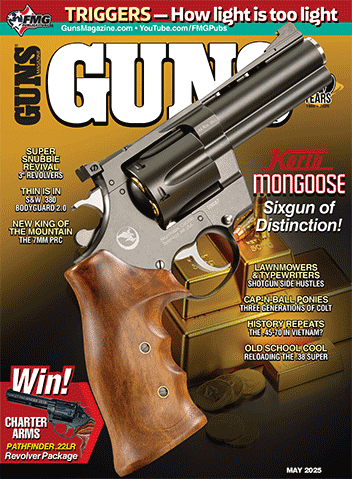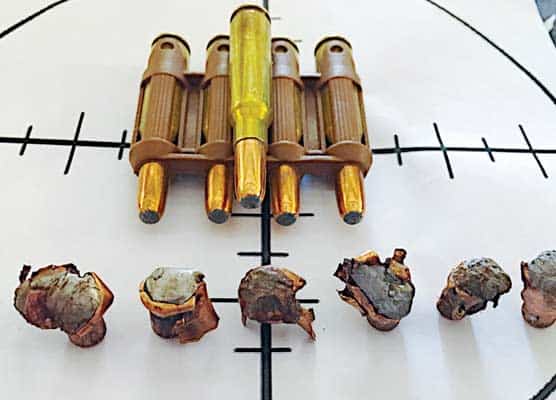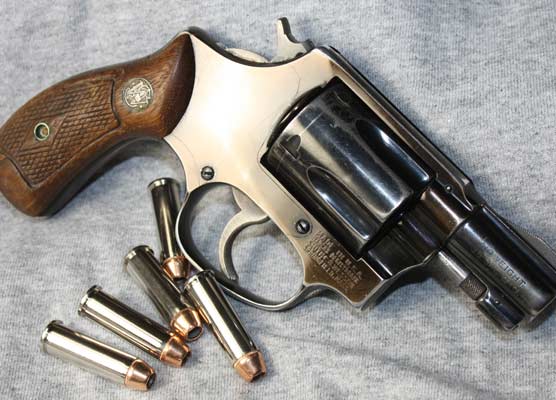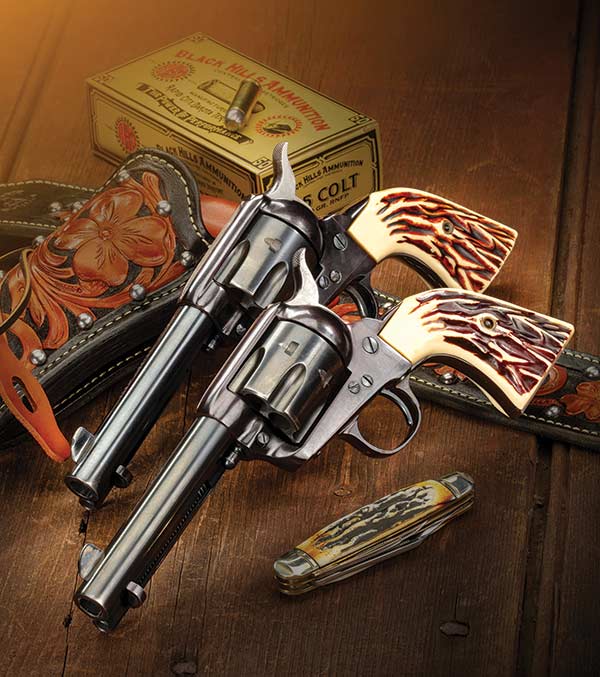S&W .380 Bodyguard 2.0
“Thin Is In” and “Light Is Right”
So, my self-styled “shooter-chick” wife was on the Internet and told me, “Come take a look at this video of Julie Golob with the new Smith & Wesson Bodyguard 2.0 .380. I want one of those!” I reviewed the vid with her and said, “I want one too, but she’s already married to my friend Simon Golob.”
“The gun, dammit!” she yelled as I barely evaded the slap.
A day later, I bought her a Smith & Wesson Bodyguard 2.0 .380. Reasons? (1) She had a birthday coming up. I would much rather buy her guns than jewelry. (2) She wanted it. Immediate gratification is a modern American tradition. (3) I have spent decades as a married man, and I teach Survival.
It turned out she loved the Bodyguard 2.0 and, to no one’s surprise more than my own, I liked it too.
Two-Oh
The original Smith & Wesson Bodyguard .380 auto was the company’s answer to the enormously successful Ruger LCP, a .380 the size of some previous .25 autos cloned from the Kel-Tec P3AT. The gun was hammer fired with a heavy double-action trigger pull for every shot and available with built-in laser sight. S&W sold a bunch of them. I never particularly cared for it: The small size and heavy trigger made it a challenge to shoot well. GLOCK’s little .380, the striker-fired G42, was not only easier in the trigger pull department but distinctly less snappy in recoil.
Current S&W management keeps its finger on the pulse of their various markets. The 2.0 version is the result — about all the Bodyguard 2.0 has in common with the original is a polymer frame, a semiautomatic design, a Smith & Wesson logo and .380 chambering.
The 2.0 is still in the 10-oz. weight range unloaded. It is still pocket size, comparable in this respect to a G42. The top of its slide measures only three quarters of an inch across. It is striker fired. It has the best sights you’ll find on a modern micro-size .380 — a big, easy-for-the-eye to catch red-orange front circle with a glowing green Tritium night sight dot in the center along with a generous rear U-notch. There are effectively cut-for-ergonomics grasping grooves fore and aft on the slide. The polymer grip is “medium stippled” and slippage-free in the hands of all of us on the test team. The “baby GLOCK-like” recurve on the backstrap locks solidly into the hollow of the palm.
The trigger is flat-faced in the currently popular style, with a prominent safety tab. The magazine release button is easy to reach. You can get two to “two-and-a-half” fingers around the grip with the short magazine and all three fingers in contact with the longer magazine unless you have humongous hands. The Bodyguard 2.0 is available with an optional thumb safety.
Those little magazines have strong springs. It wasn’t a problem for me to thumb all 10 rounds into the short magazine, but there was so little flex left we couldn’t push the mag all the way into the pistol with the slide forward. Think of it as a 9-round magazine.
The 12-round magazine filled easily with ten .380 cartridges, but the 11th took some work and the 12th round only went in with the assistance of an Uplula mag-filling device. The 12-round magazine is really good for 11. We had to pound this mag into the mag well even with 11. Maybe the springs will eventually lighten, but I’m not going to take that chance with a life-or-death defense pistol.
Even with only 11 rounds, the 12-round factory mag with Bodyguard 2.0 serial number M6941 wouldn’t lock in with the slide forward even. In fairness to the gun, that’s nine-plus-one or 10-plus-one compared to the previous micro .380 paradigm of six-plus-one — still impressive.
The slide grasping grooves are well designed but there’s a strong recoil spring and it takes some force to rack the slide. If you’re looking for a gun requiring little effort in this respect, you’re on the wrong page of the S&W catalog — look for their EZ series or Equalizer pistol. That said, the five-foot-tall owner of the test gun said she had no problem with it.
Trigger
The trigger is “the heart of the beast” for good shooting. This gun had a good heart. I had been hearing about it having a 4-lb. trigger pull which — particularly with a gun that might be pocket carried without a manual safety — concerned me. I was reassured when the Lyman digital trigger gauge showed our sample’s average trigger pull weight was 5.11 lbs. Long ago, the first popular striker-fired pistol, the GLOCK, established 5.5 lbs. as the “common custom and practice” trigger pull weight for this style of handgun.
Your Bodyguard 2.0 will come with a flat-faced tabbed trigger and a short trigger reach. This allows an average-size male hand to easily get on the trigger at the distal joint, which gives significantly more leverage than the pad of the index finger and thus affords much more leverage, making the Bodyguard 2.0’s trigger feel much lighter than it weighs out. Of course, this is a boon to a shooter with short fingers.
This trigger has a short take-up before it meets “the wall” and then a reasonably crisp break. Reader’s Digest version — It’s easy to shoot. Reset length is “medium,” that is, easily manageable. No one on the test team complained about the trigger pull, not the men, not the women, not even the guy with degenerative arthritis in his hands that had twisted his trigger finger.
Accuracy
On page 47 of the Bodyguard 2.0’s owner’s manual, it says, “Smith & Wesson Inc. hereby certifies average accuracy test results for all new handguns with a barrel shorter than 3″ as follows: 7 yards 1.7″, 14 yards 3.9″, 21 yards 6.3″.” For perspective, the rule of thumb has long been that “acceptable service pistol accuracy is 4″ at 25 yards.”
The Bodyguard 2.0 is, after all, a pocket pistol and not a service pistol. With this in mind, we tested at 25 yards anyway from a Matrix rest on a concrete bench. Each 5-shot group was measured once overall for an idea of predictable accuracy in experienced hands under perfect conditions, and measured again for the best three measured center-to-center.
The .380 has enough power to deliver either adequate penetration or full mushrooming, but not both. The most impressively expanding .380 I’ve seen so far is Federal’s HST Micro designed expressly for very short barrels, but ballistic gel tests indicate this 99-grain JHP won’t make FBI’s minimum 12″ penetration. Accuracy was 3.70″ for all five and 2.05″ for the best three, which approximates a machine rest test.
My favorite .380 load is Hornady’s American Gunner with a 90-grain XTP jacketed hollow point. It tends to come fairly close to the 12″ penetration mark with at least some expansion. On my range it delivered a very disappointing 9.10″ five-shot group, but the best three were in a more reassuring 2.90″.
Many feel contemporary fluted solid bullets don’t expand but are shaped to spin flesh away from the wound channel and are the best bet with these smaller calibers. Penetration is deep, some fear perhaps even too deep. Lehigh 68-grain rated for 1,100 feet per second clustered five shots in 4.55″ with the tightest trio measuring 2.50″.
One .380 contingent swears by standard 95-grain full metal jacket to guarantee adequate penetration and it’s also the cheapest, but this is the load which earned the .380 its reputation as too feeble for gunfighting. Federal American Eagle delivered a 4.95″ group (all five) and 1.80″ (best three). However, the star of the accuracy show was Remington-UMC 95-grain ball. This load has proven the most accurate in the little GLOCK 42 I’ve used to win more than one Pocket GLOCK match was clearly the most accurate load tested in the Bodyguard 2.0 — five shots in 3.0″ and the best three in 1.30″ at 25 yards.
Grouping is one test of accuracy; whether the gun hits where it’s aimed is another. The sweet 3″ group was on for elevation but centered a good 7″ left at 75 feet. The rear sight is dovetailed and driftable. It was not visually off center on the slide, either. No big problem: We’ll just pound the damn sight over to bring it true. By the way, I’ve heard from other Bodyguard 2.0 owners whose samples have also shot to the left of point of aim.
Reliability
Reliable function is the non-negotiable baseline for a defensive handgun and no one buys a .380 for any other purpose except collection. Gail’s Bodyguard 2.0 now has a few hundred rounds of almost every type of .380 ammo through it with zero malfunctions.
One female tester thought it kicked more than her 9mm S&W M&P Compact. However, all the rest of us who shot it were pleased with its soft recoil, just a notch above shooting a .22 in terms of “kick” back into the hand and muzzle rise.
Most autoloaders will go out of battery if pressed against a homicidal attacker’s body, rendering the gun unshootable at the worst possible time. This one won’t. The design of its recoil spring guide creates a “standoff effect” allowing the pistol to fire in hard muzzle press contact, a potentially life-saving feature I’m still amazed gunmakers who offer it don’t advertise.
Bottom Line
Your correspondent here is the guy who said “friends don’t let friends carry mouse guns,” but who also recognizes if you need to carry the lightest, tiniest pistol possible, a .380 is a good way to go. My lovely bride normally carried a 9mm and occasionally a .45 until afflicted by a hip problem and she had to go to pocket carry.
With her wardrobe, small/thin/light became an absolute necessity. She is a former state and regional IDPA female champion and has been known to win combat pistol matches in open class against the men — I think she can handle the more precise shot placement less powerful handguns require until she heals up.
And, once the point of aim/point of impact issue with this particular specimen is cleared up, this super-thin super-light S&W Bodyguard 2.0 pocket pistol is going to be her best choice for an “orthopedic carry gun.”
